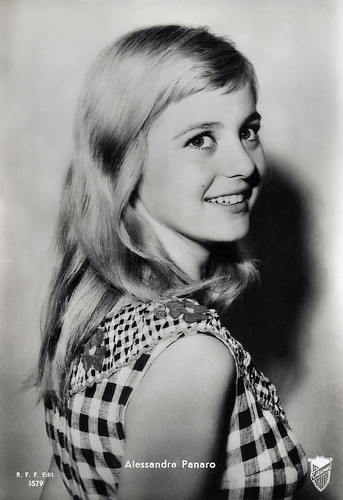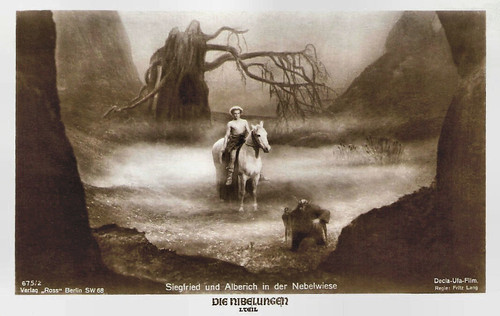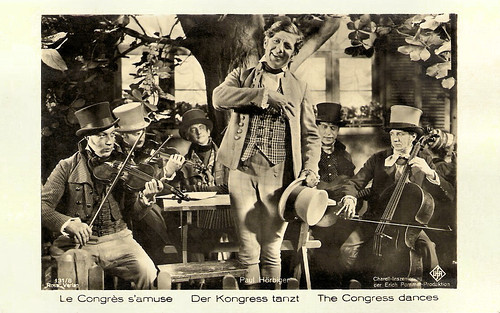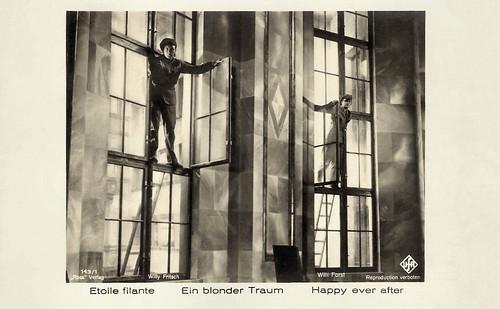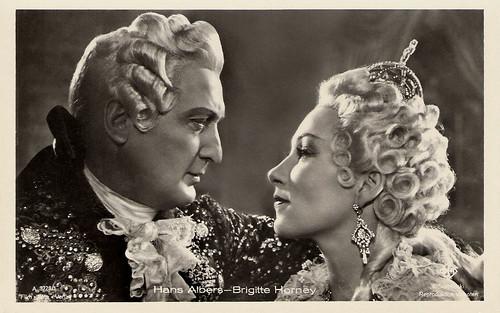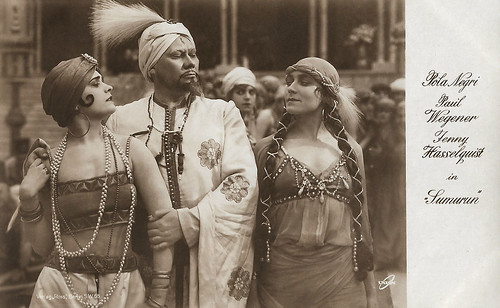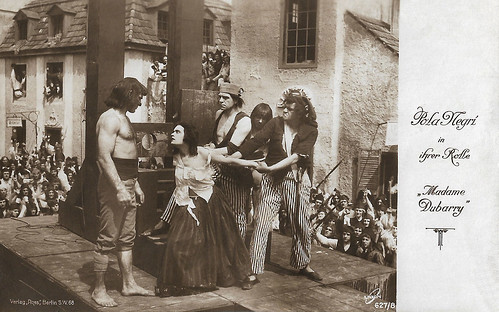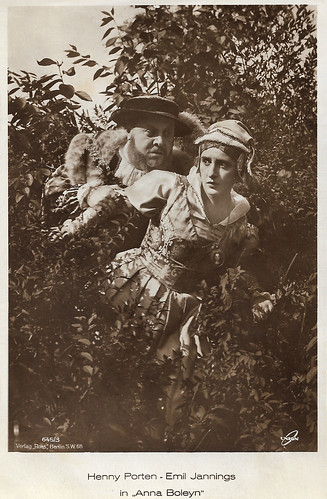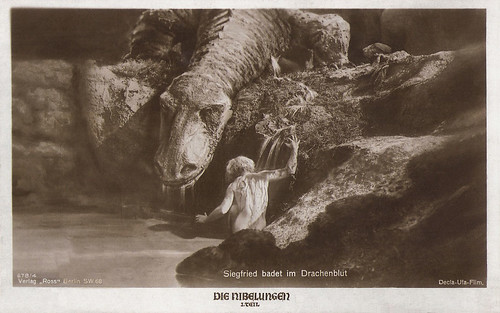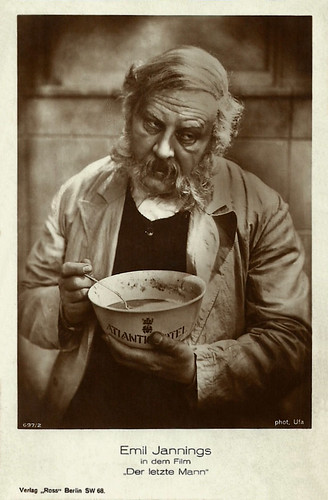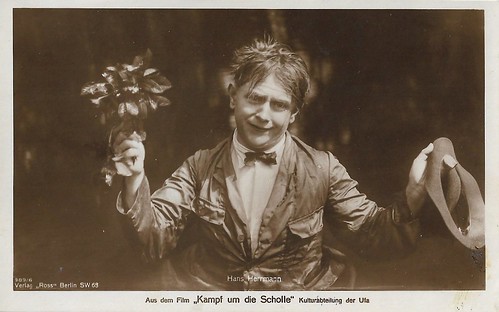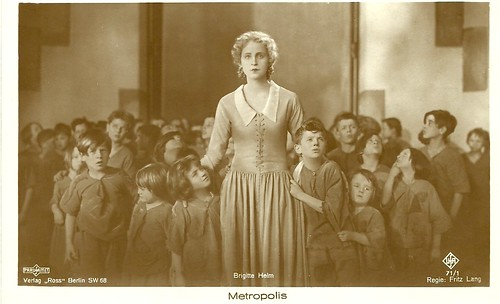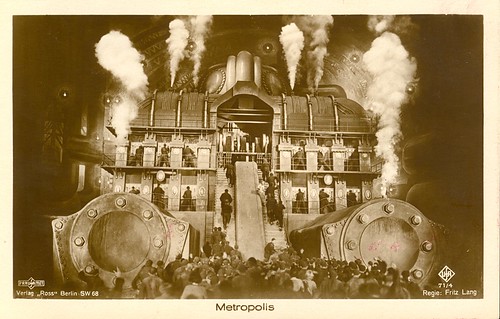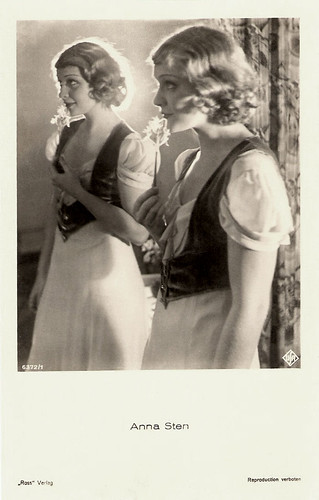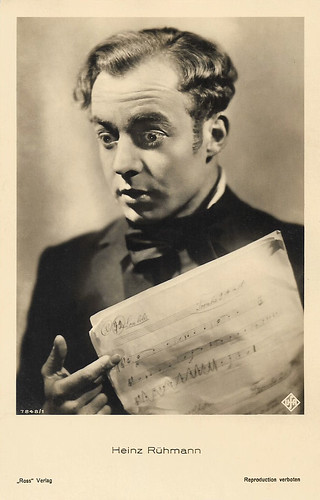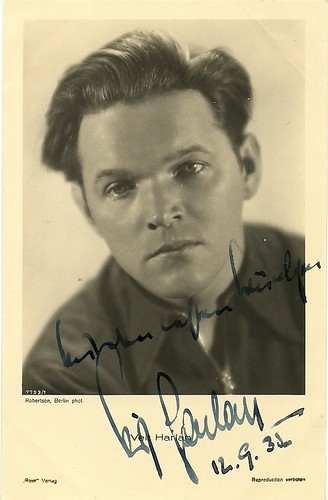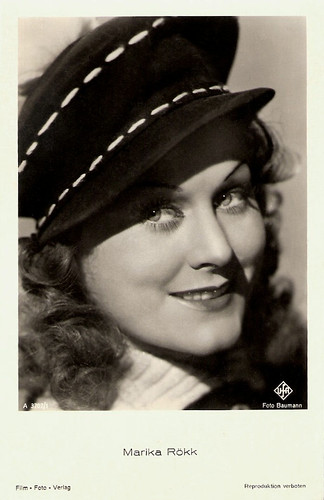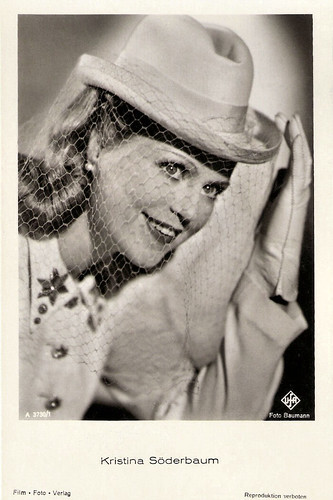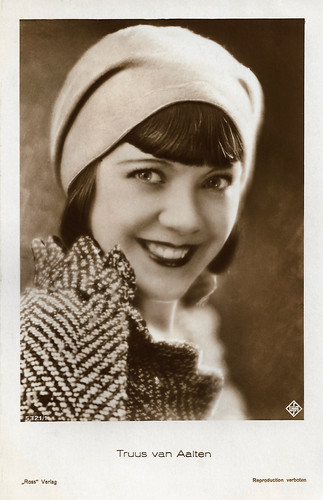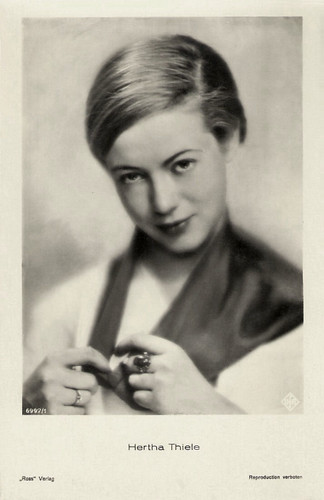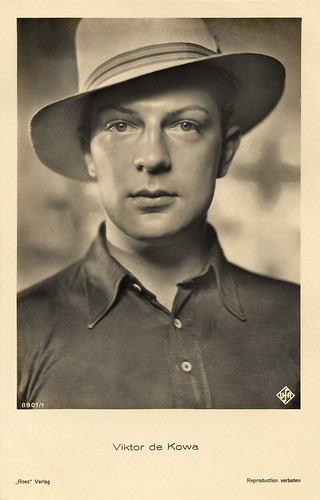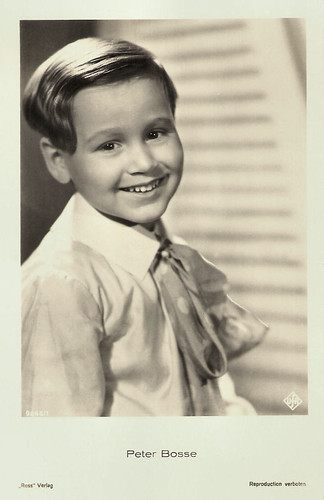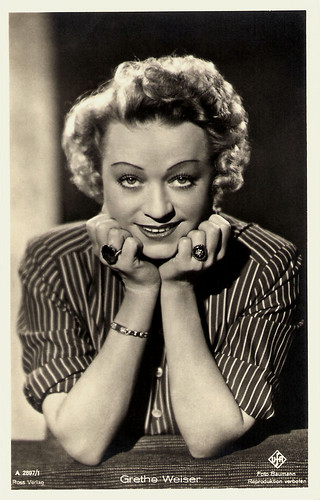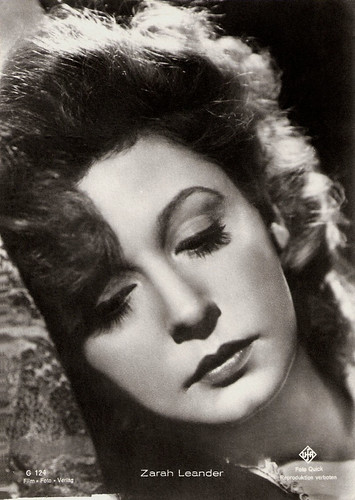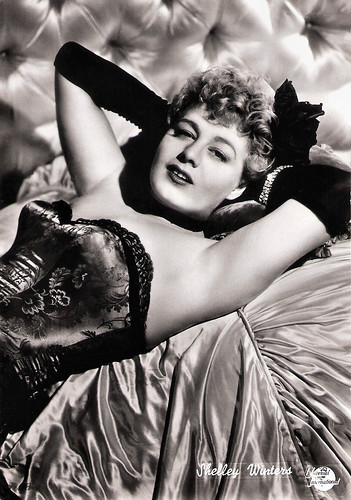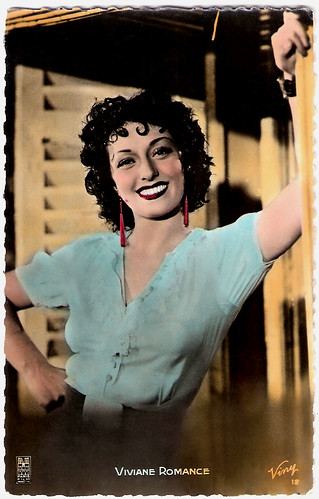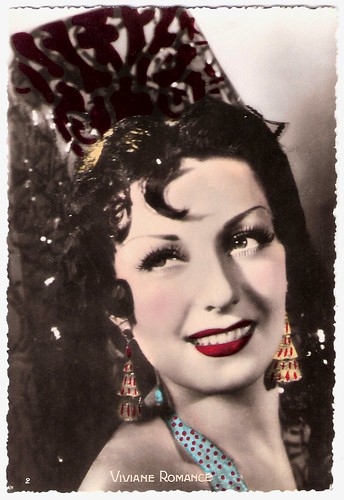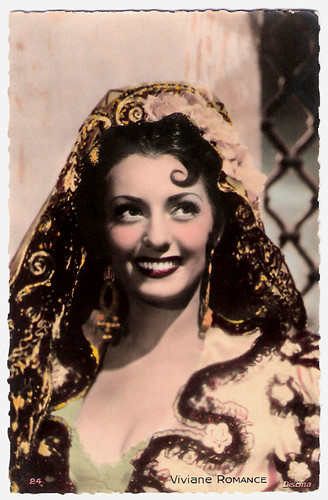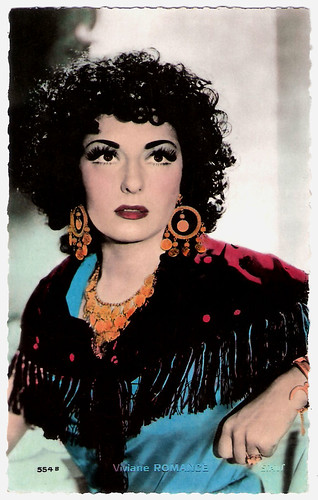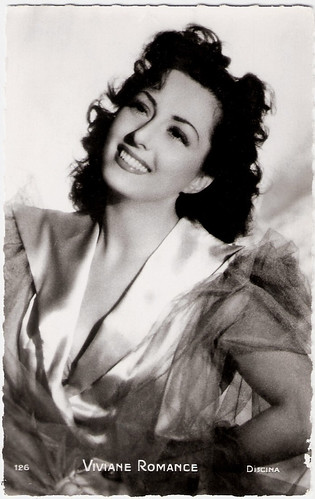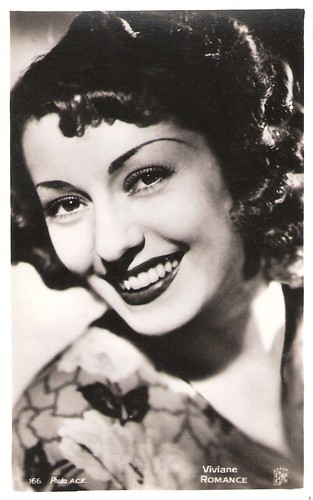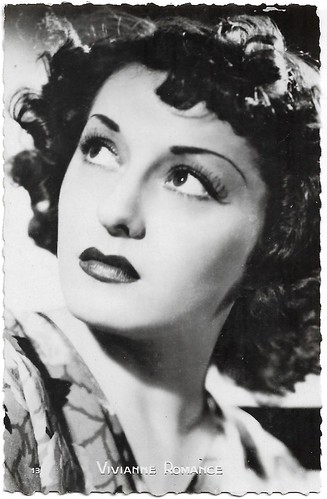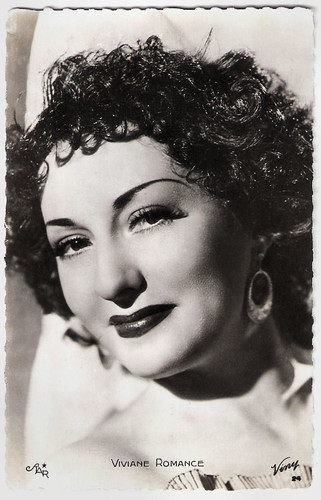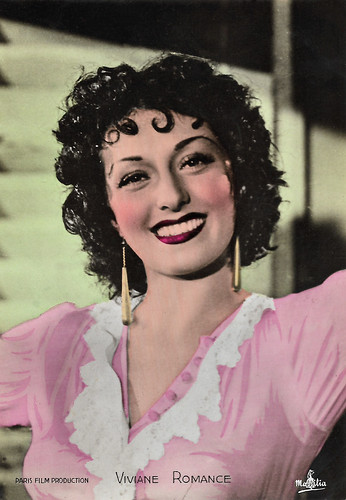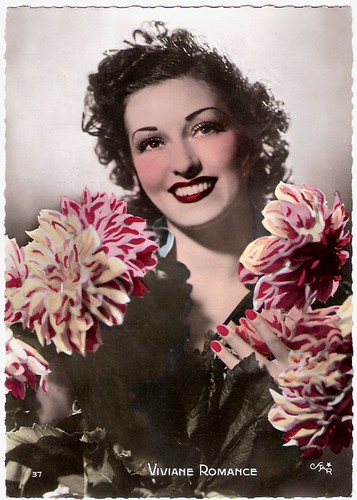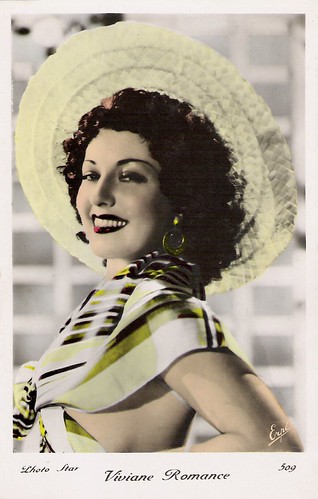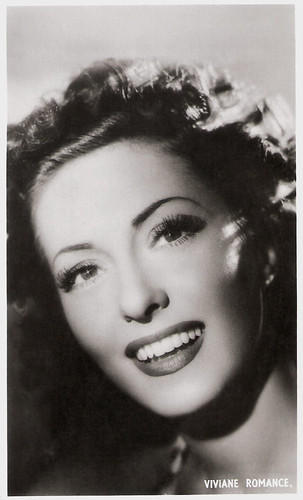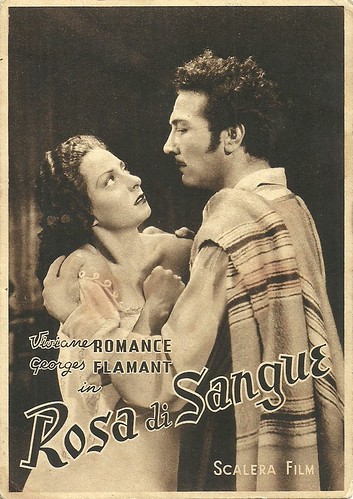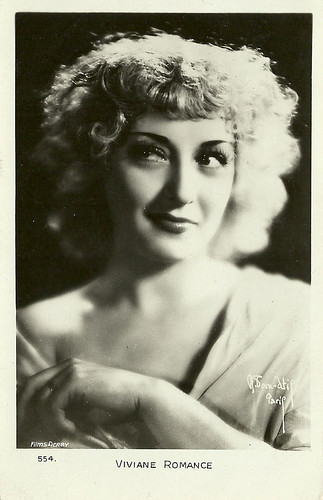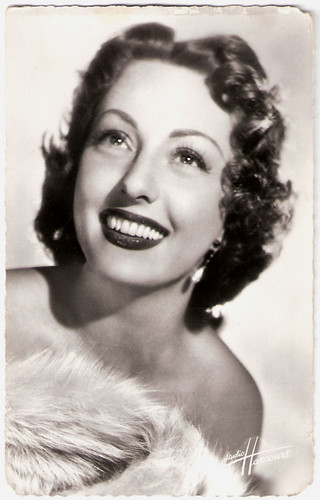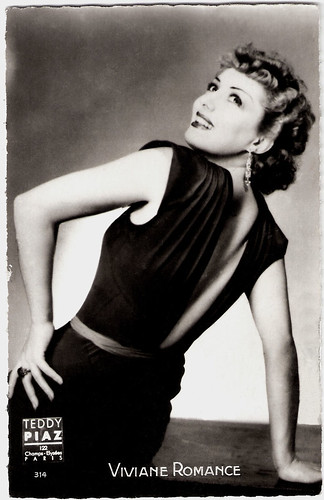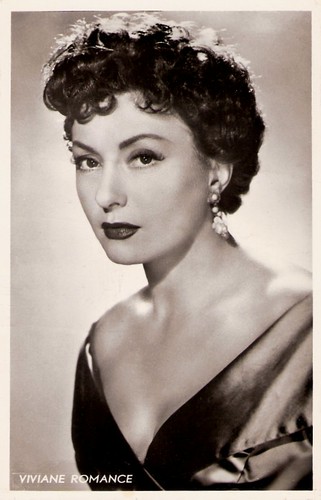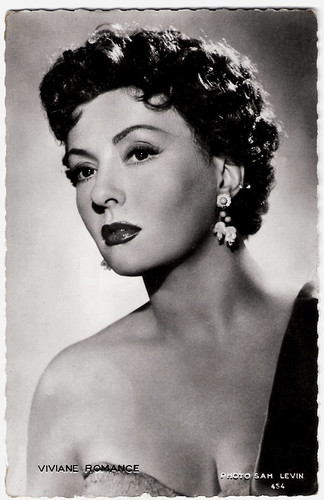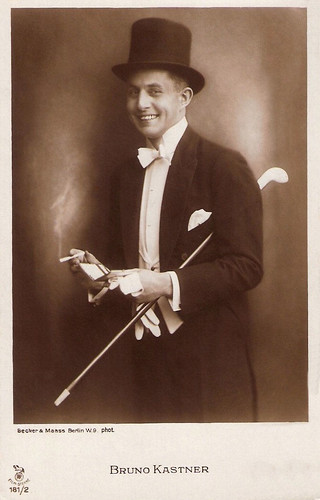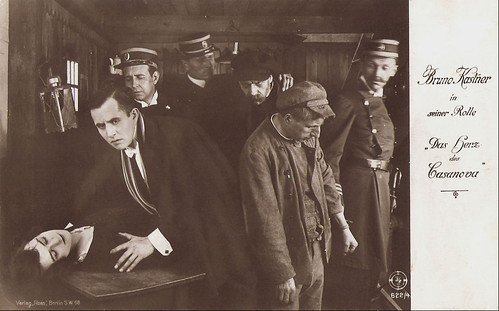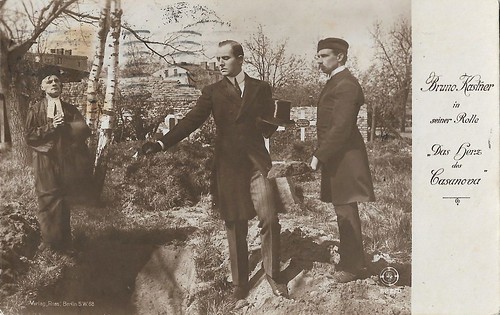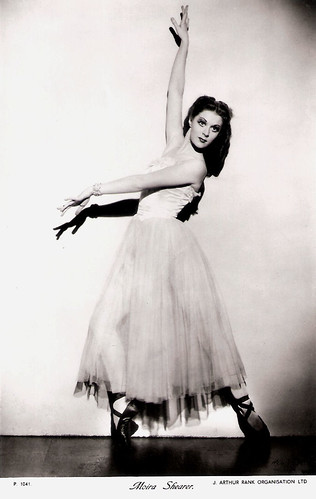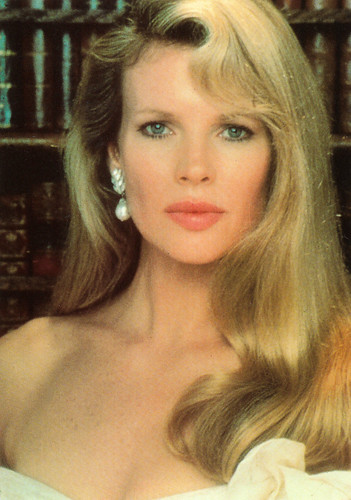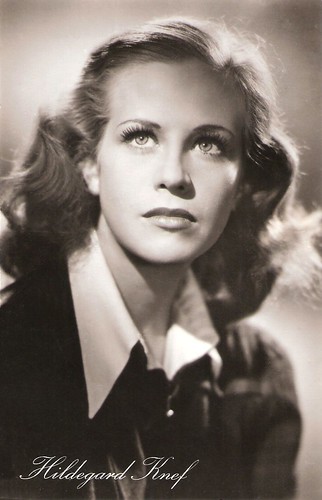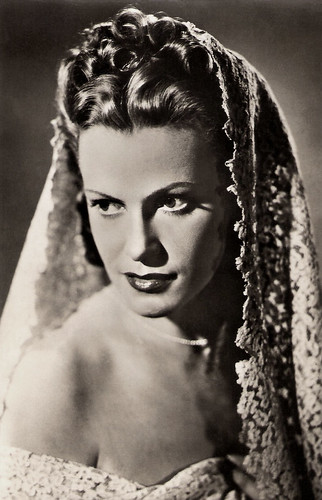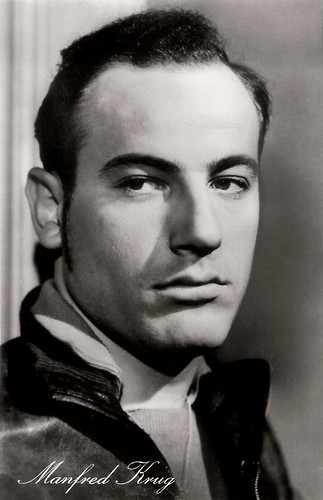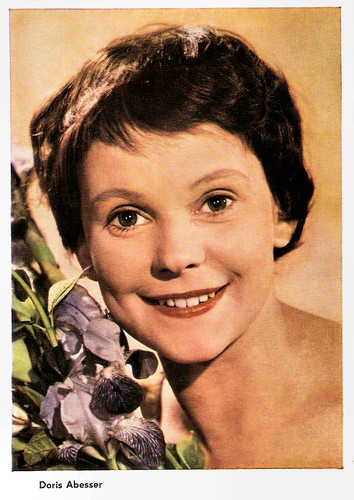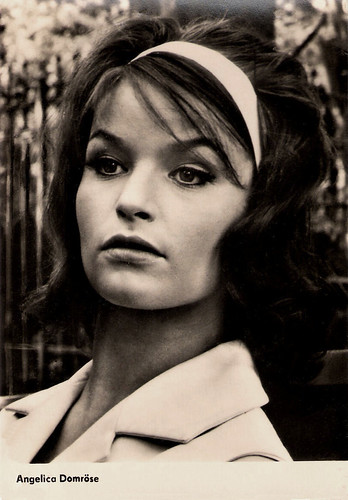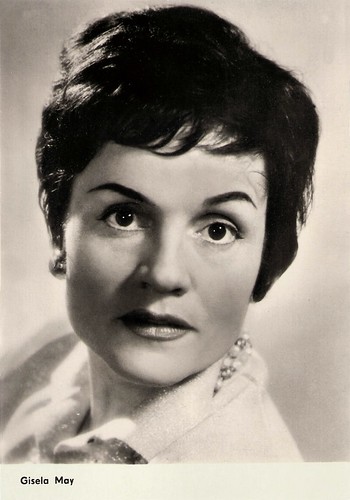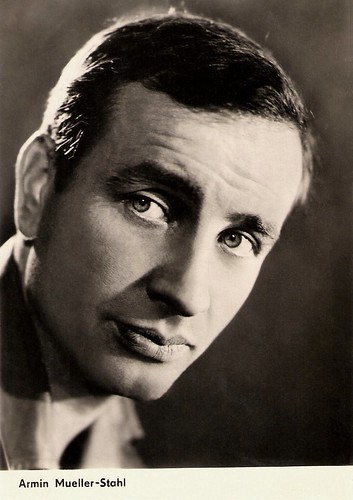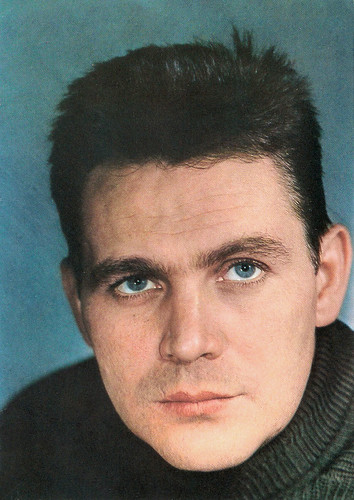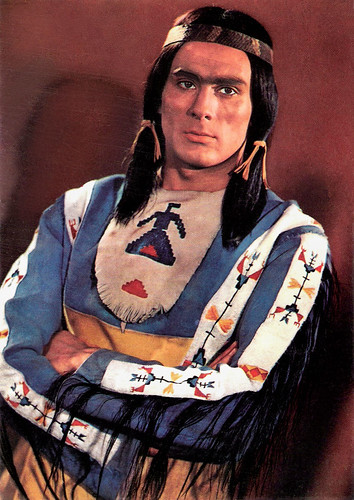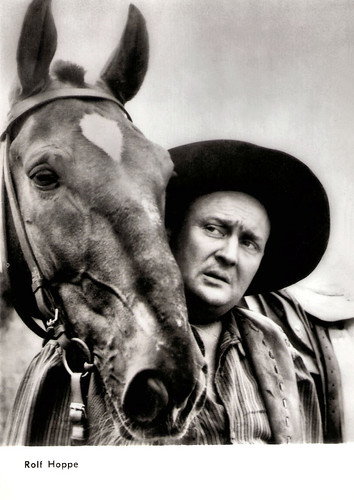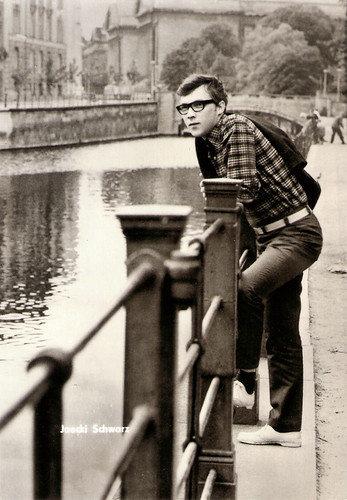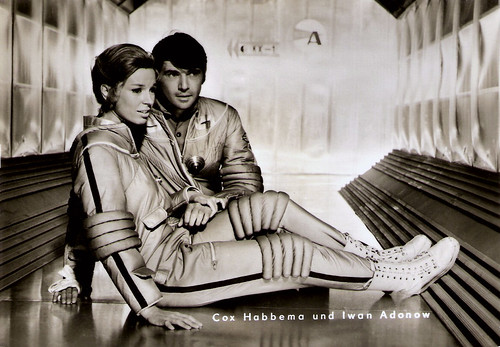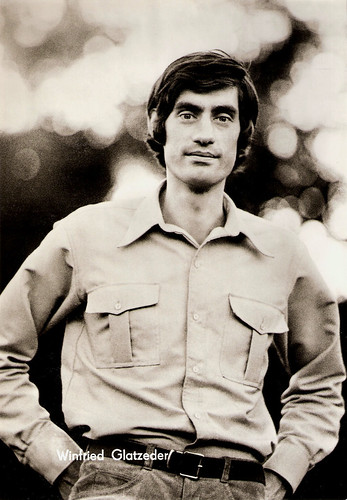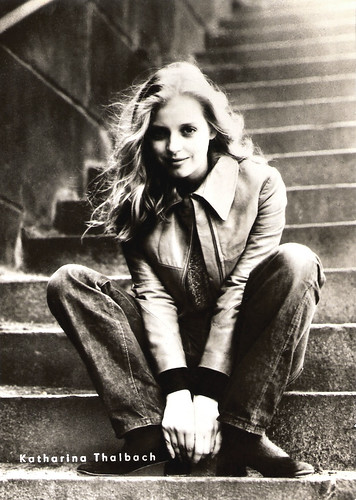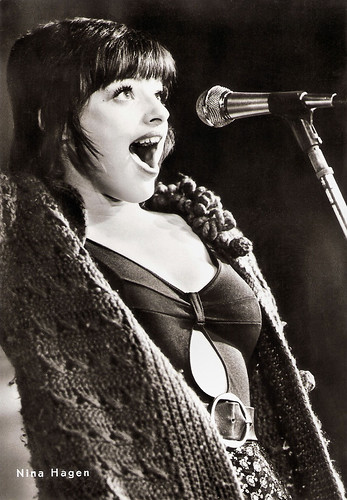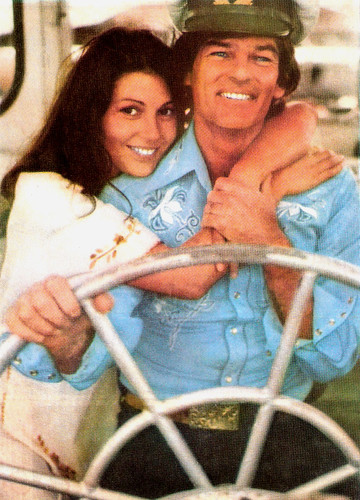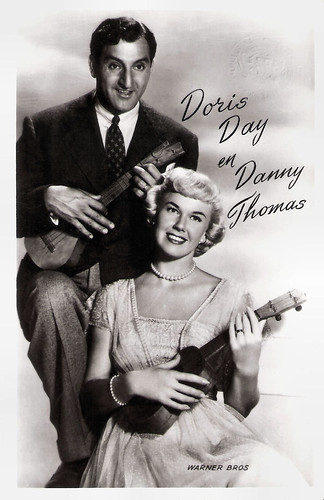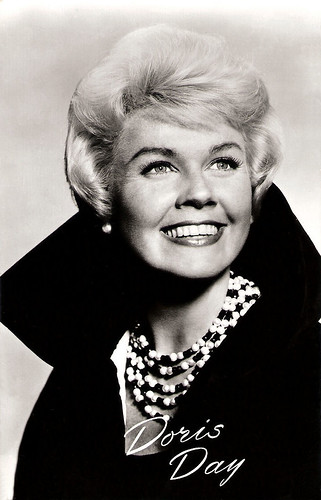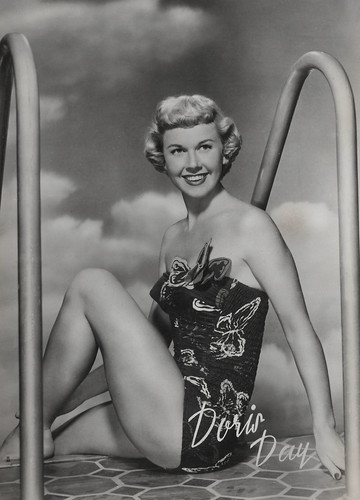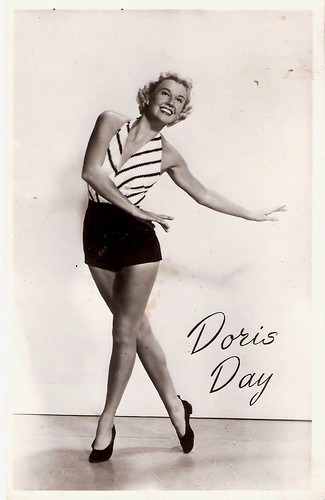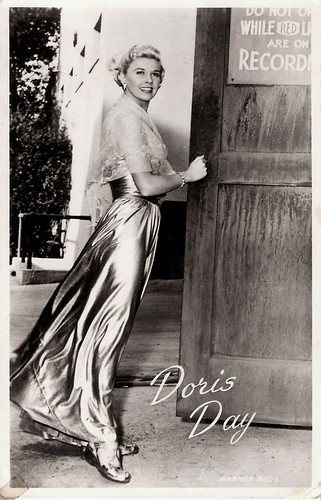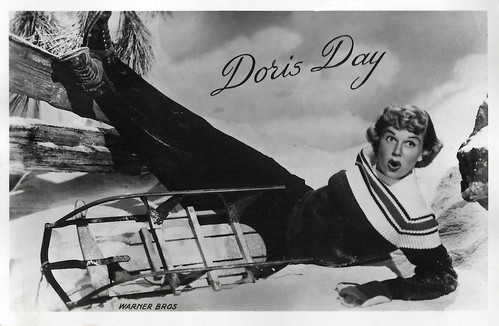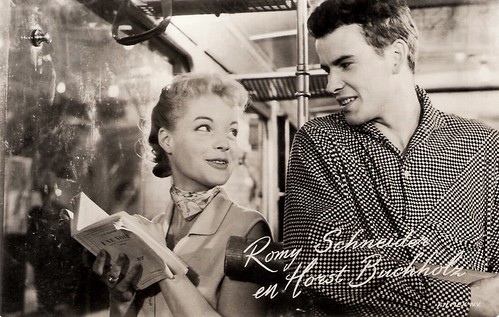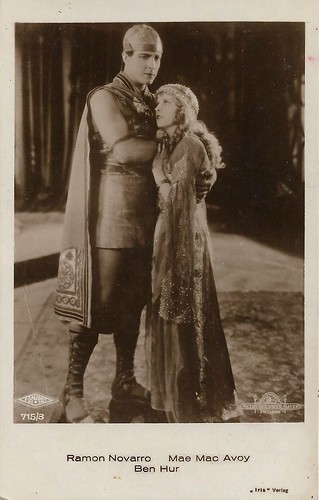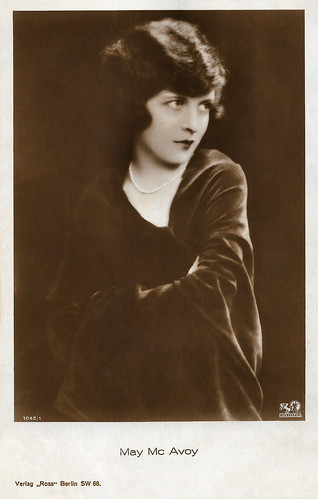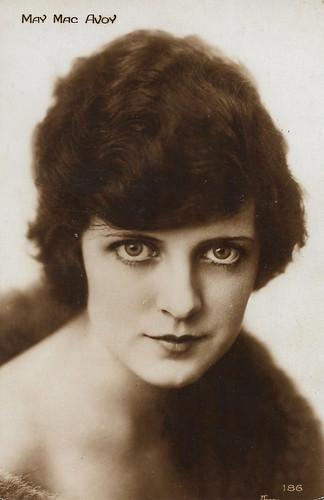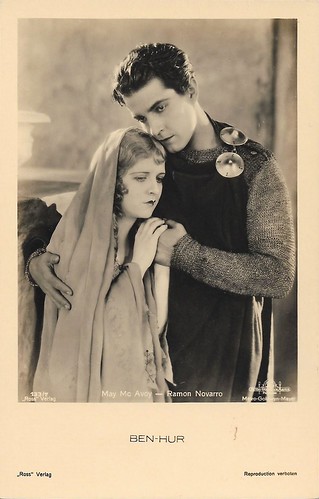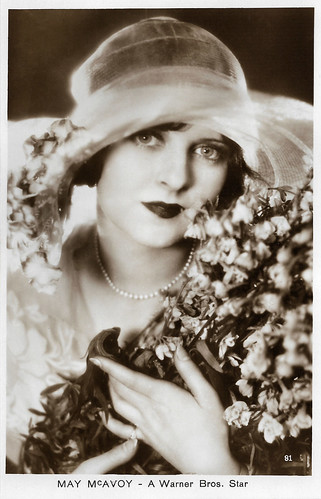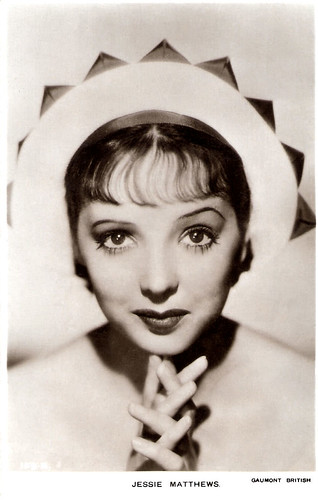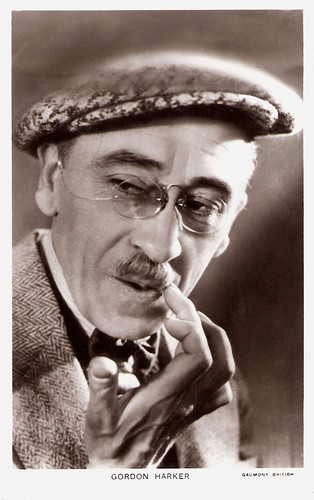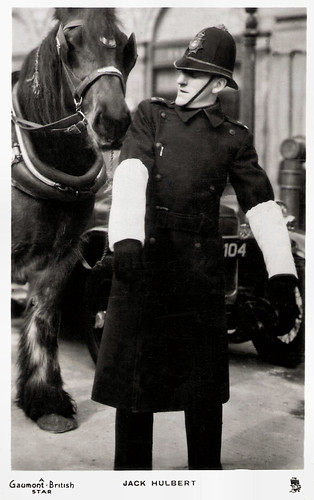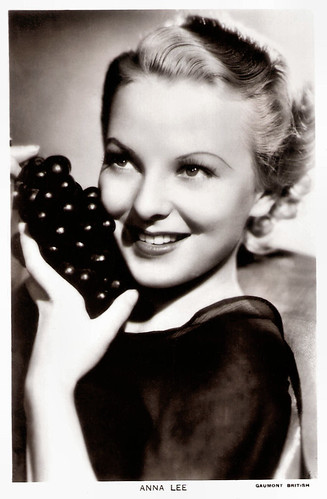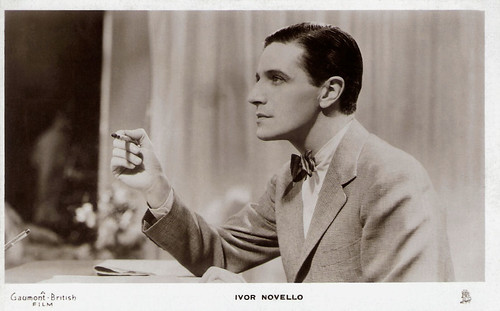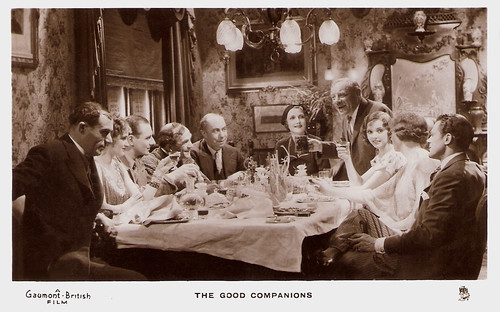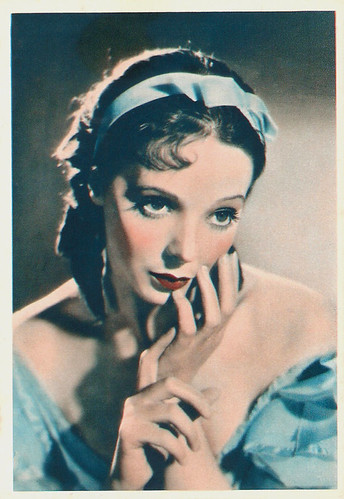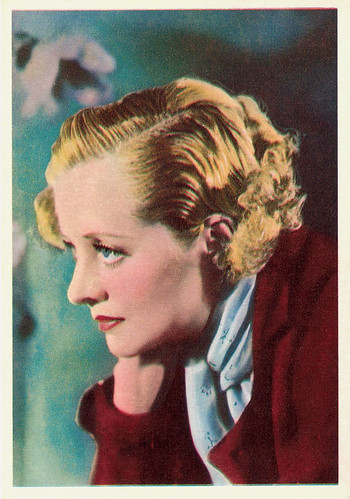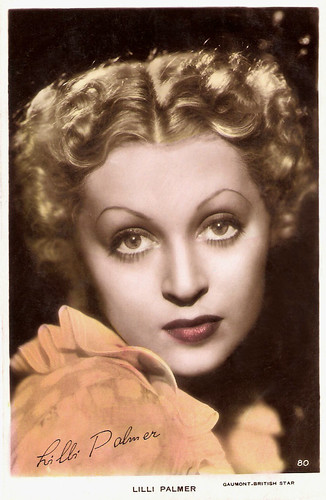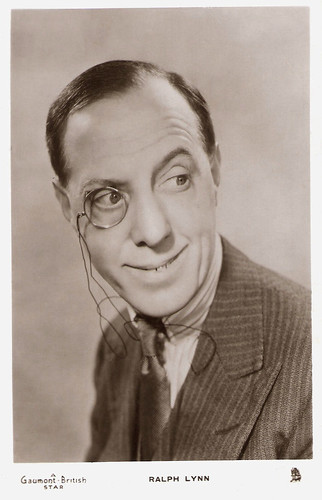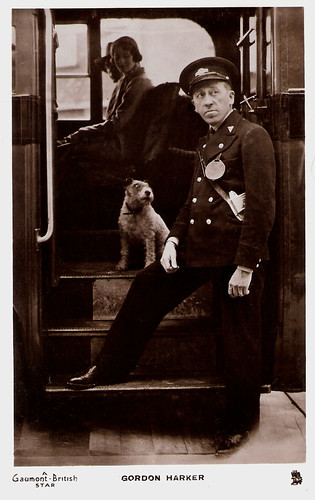Universum-Film Aktiengesellschaft (Ufa) was a major German film company headquartered in Babelsberg, near Berlin. From 1917 through to the end of the Nazi era, Ufa produced and distributed hundreds of films. Ufa has recorded unsurpassed artistic successes with silent films such as Fritz Lang's Metropolis (1926) and Frau im Mond/Woman in the Moon (1929) and Joe May's Asphalt (1929). In 1930, the company enjoyed worldwide success with Der blaue Engel/The Blue Angel, directed by Joseph von Sternberg, and starring Emil Jannings and Marlene Dietrich. In 1942, as a result of the Nazi policy of 'forcible coordination' known as 'the Gleichschaltung', Ufa and all of its competitors, including Tobis, Terra, and Bavaria Film, were bundled together with foreign film production companies Nazi-controlled to form the super-corporation UFA-Film GmbH (UFI), with headquarters in Berlin.![Paul Richter in Die Nibelungen: Siegfried (1924)]()
German postcard by Ross Verlag, Berlin, no. 675/2, ca. 1924. Photo: Decla-Ufa-Film. Publicity still for
Die Nibelungen: Siegfried (Fritz Lang, 1924). Siegfried (
Paul Richter) and Alberich in the fog meadow.
![Emil Jannings and Yvette Guilbert in Faust (1926)]()
German postcard by Ross Verlag, no. 62/2. Photo: Parufamet / Ufa. Still with
Emil Jannings as Mephisto and
Yvette Guilbert as Marthe in
Faust (F.W. Murnau, 1926).
![Paul Hörbiger in Der Kongress tanzt (1931)]()
German postcard by Ross Verlag, no. 131/8. Photo: Ufa. Still from
Der Kongress Tanzt/The Congress Dances (Erik Charell, 1931) with
Paul Hörbiger.
![Willy Fritsch and Willi Forst in Ein blonder Traum (1932)]()
German postcard by Ross Verlag, no. 143/1. Film title in three languages. Photo: Ufa. Publicity still for the Ufa-comedy
Ein blonder Traum (Paul Martin, 1932), with
Willy Fritsch and
Willi Forst as window cleaners. Sets by
Erich Kettelhut.
![Hans Albers, Brigitte Horney]()
German postcard by Film-Foto-Verlag, no. A 3728/1, 1941-1944. Photo: V. Swolinski / Ufa. Publicity still for
Munchhausen/The Adventures of Baron Munchausen (Josef von Baky, 1943) with
Hans Albers and
Brigitte Horney.
A direct response to foreign competition in film and propaganda
Universum-Film Aktiengesellschaft (Ufa, also written as UFA) was established on 18 December 1917, as a direct response to foreign competition in film and propaganda. Ufa was founded by a consortium headed by
Emil Georg von Stauß, a former Deutsche Bank board member.
An early step towards the founding of UFA was taken on 13 January 1917 with the creation of the Bild- und Filmamt (Bufa) by Germany's Supreme Army Command. Formed as a reaction to the perceived advantage of Germany's enemies in the realm of film propaganda, Bufa's task was to make use of film for the purposes of psychological warfare.
However, the plans envisaged by the German General Staff – especially those of
Erich Ludendorff– went far beyond the creation of Bufa. Ludendorff foresaw a large-scale, state-controlled film corporation that would serve national interests. In this spirit, Universum-Film AG (Ufa) was founded as a consolidation of private film companies on 18 December 1917 in Berlin. The company's starting capital amounted to 25 million Reichsmark: among the contributors were the German government, the War Ministry and Deutsche Bank.
Prior to establishing the company, the General Staff had initially considered taking over the Deutsche Lichtbild-Gesellschaft (DLG), which had been founded in 1916. This agency, however, was far too much under the influence of heavy industry and, in particular, of
Alfred Hugenberg, chairman of Krupp. Hugenberg would later take over Ufa in 1927.
Three main film companies formed the nucleus of UFA from the end of 1917: Messter Film, owned by
Oskar Messter, a dominant German producer; PAGU (Projektions Union), originally formed by
Paul Davidson in Frankfurt, with the Tempelhof Studios in Oberlandstraße in Berlin-Tempelhof and in Weissensee; and the Union-Theater chain of some 50 cinemas; and the entire German operation of Nordisk Film (founded in 1906 by
Ole Olsen) including Nordische Films, the production company Oliver-Film of German producer
David Oliver, cinemas, and a distribution company, was bought by Ufa in 1918.
Soon more companies joined Ufa:
Joe May's May-Film company, with film duplicating plant and glass-house studios at Weissensee Studios (next door to PAGU); Greenbaum-Film (previously Vitascope), Deutsche Bioscope (founded by Greenbaum in 1902) wich had merged in March 1920 with
Erich Pommer's German branch of Éclair (Deutsche Éclair) to form Decla-Bioscop, taken over by Ufa in October 1921.
Ufa continued to sign production agreements with various independent producers, including Deulig (previously Deutsche Lichtbild-Gesellschaft), Cserépy Film, founded by
Arzén von Cserépy, merged with UFA in 1922: Gloria-Film AG, founded by
Hanns Lippmann;
Heinrich Bolten-Baeckers' BB-Film; Rex-Film, founded in 1917 by
Lupu Pick, Fern-Andra Vertriebsgesellschaft, Ossi-Oswalda-Film contracted to UFA from 1925; and the distributor Hansa-Film
![Pola Negri, Paul Wegener and Jenny Hasselquist in Sumurun (1920)]()
German postcard by Ross Verlag, Berlin. Photo: Union Film. Publicity still for
Sumurun (Ernst Lubitsch, 1920) with
Pola Negri,Paul Wegener and
Jenny Hasselquist.
![Pola Negri in Madame Dubarry (1919)]()
German postcard by Ross Verlag, no. 627/8. Photo: Union.
Pola Negri in
Madame Dubarry (Ernst Lubitsch, 1918).
![Emil Jannings and Henny Porten in Anna Boleyn (1920)]()
German postcard by Ross Verlag, Berlin, no. 645/3. Photo: Union Film. Publicity still for
Anna Boleyn (Ernst Lubitsch, 1920) with
Emil Jannings and
Henny Porten.
![Die Nibelungen: Siegfried bathes in the dragon's blood]()
German postcard by Ross Verlag, no. 678/4. Photo: Decla-Ufa-Film. Publicity still for
Die Nibelungen: Siegfried (Fritz Lang, 1924). Caption: Siegfried bathes in the dragon's blood. After slaying the dragon, Siegfried (
Paul Richter) bathes in the dragon's blood, which will make him invulnerable. Incidentally, a leaf falls on his back, creating Siegfried's one weak spot (his Achilles heel). When the vain and arrogant Paul Richter refused to strip for this scene, Lang called in the not so pretty
Rudolf Klein-Rogge (Etzel - Attila - in the film), who immediately undressed and played the scene, to the dismay of Richter, as people now would identify Klein-Rogge's behind as his.
![Die Nibelungen 2: Kriemhilds Rache]()
German postcard by Ross Verlag, Berlin, no. 671/8. Photo: Decla-Ufa-Film. Publicity still for
Die Nibelungen 2: Kriemhilds Rache/Die Nibelungen: Kriemhild's Revenge (Fritz Lang, 1924). Kriemhild (
Margarete Schön) has got the deathblow. In the back, King Hetzel (
Rudolf Klein-Rogge) looks on in astonishment.
Ideal conditions for the conquest of the German market
After World War I, Ufa had ideal conditions for their conquest of the German market. Germany had been – and continued to be – largely cut off from film imports due to the war.
The mission of Ufa at the time of its founding was the production of films – feature films, documentaries, cultural films and weekly headline (newsreel) films – designed to function as propaganda for Germany abroad. However, after mounting tensions between the company's founding members, Deutsche Bank was able to prevail and implement their approach to film production as a business rather than for military objectives. Instead of propaganda films, Ufa now produced elaborate entertainment films such as
Sumurun (Ernst Lubitsch, 1920) with
Paul Wegener and
Pola Negri.
In addition to his turbulent comedies,
Ernst Lubitsch staged a series of million-dollar historical films. His
Madame DuBarry(Ernst Lubitsch, 1919) with
Pola Negri,
Emil Jannings and
Harry Liedtke was celebrated in Europe and the United States exuberantly. When Lubitsch shot
Anna Boleyn/Anne Boleyn (Ernst Lubitsch, 1920) with Jannings and
Henny Porten in the Tempelhof studio in the fall of 1920, Reich President
Friedrich Ebert paid his respects to the forex messenger: "A prestige film to show foreign countries what the German film industry has made progress."
In 1921, Ufa was already producing the lion's share of German feature films, and in that same year it was privatised. Starting in 1922, large ateliers in Neubabelsberg (today's Babelsberg Studio) and on Oberlandstraße in Berlin-Tempelhof were made available for film production. In 1926, the facilities were expanded by means of the construction of the largest studio hall in Europe at the time.
In 1923, after Decla-Bioscop AG and others were taken over,
Erich Pommer became head of all production operations and discovered and fostered many stars, including
Emil Jannings,
Pola Negri,
Conrad Veidt and
Lya de Putti. Ufa became a modern multi-national company and media conglomerate. Very aware of Hollywood, Ufa tried to emulate it, rival with it, or differentiate itself from it. Focused on principles of product differentiation and niche marketing, Ufa deliberately created an art cinema and super-productions for export (the latter specifically designed and budgeted to break into the American market), while it looked to domestic cinema based on popular genres and stars for its economic foundation.
Ufa thus became a leader in the time of the German Expressionism, experienced a further boom and emerged as a direct competitor to Hollywood with films such as
Das Cabinet des Dr. Caligari/The Cabinet of Dr. Caligari (Robert Wiene, 1920) with
Werner Krauss,
Dr. Mabuse, der Spieler/Dr. Mabuse the Gambler (Fritz Lang, 1922) starring
Rudolf Klein-Rogge,
Die Nibelungen (Fritz Lang, 1924) with
Paul Richter, and
Varieté/Variety (E.A. Dupont, 1925).
In 1924,
Erich Pommer created the most artistically fruitful partnership of the German silent film: director
Friedrich Wilhelm Murnau, film poet
Carl Mayer, cinematographer
Karl Freund and the architects
Robert Herlth and
Walter Röhrig. Their first joint film was
Der Lezte Mann/The Last Laugh (F.W. Murnau, 1924), with
Emil Jannings in the lead role. "Please invent something new, even if it should be crazy," Pommer had asked, and the film makers came up with the 'entfesselte Kamera' (unleashed camera), which was used here for the first time to develop a consistent cinematic narrative. Two years later, the same team created another masterpiece,
Faust (F.W. Murnau, 1926) with
Gösta Ekman and
Camilla Horn.
![Emil Jannings in Der letzte Mann (1924)]()
German postcard by Ross Verlag, no. 697/2. Photo: Ufa. Publicity still for
Der letzte Mann/The Last Laugh (F.W. Murnau, 1924).
Emil Jannings as a proud hotel doorman who looses his self-esteem and that of others when he is reduced to a toilet man, working in the basement of the hotel.
![Gymnastik Schule Hedwig Hagemann in Wege zu Kraft und Schönheit (1925)]()
German postcard by Ross Verlag, Berlin, no. 24/13. Photo: Ufa. Publicity still for
Wege zu Kraft und Schönheit/Ways to Strength and Beauty (Nicholas Kaufmann, Wilhelm Prager, 1925). Pictured are members of the Gymnastik Schule Hedwig Hagemann in Hamburg. Collection: Didier Hanson.
![Willy Fritsch in Ein Walzertraum (1925)]()
German postcard by Ross Verlag, no. 48/2. Photo: Ufa.
Willy Fritsch in the German silent film
Ein Walzertraum/The Waltz Dream (Ludwig Berger, 1925), based on the Oscar Strauss operetta.
![Hans Hermann (Schaufuss) in Kampf um die Scholle (1925)]()
German postcard by Ross Verlag, no. 989/6. Photo: Ufa. Publicity still for
Kampf um die Scholle/Struggle for the Soil (Erich Waschneck, 1925) with
Hans Hermann.
![Gösta Ekman and Camilla Horn in Faust (1926)]()
German postcard by Ross Verlag, no. 66/6. Photo: Ufa. Publicity still for
Faust (1926) with
Gösta Ekman and
Camilla Horn.
Severe miscalculations
After the stabilisation of the German currency starting in November 1923, the German film industry in general entered a period of crisis: foreign sales stalled due to low profit margins and the German market became profitable once again for American film giants. The resulting concentration on a few large German film companies, which came together to unite production, distribution and presentation under one Ufa's managers made severe miscalculations with regard to two large-scale productions,
Die Nibelungen (Fritz Lang, 1924) and
Metropolis (Fritz Lang, 1926).
In 1925, financial pressures compelled UFA to enter into distribution agreements with American studios Paramount and Metro-Goldwyn-Mayer to form Parufamet. The joint distribution company was supposed to distribute 60 films a year in Germany, 20 each from Paramount, Ufa and MGM. However, the agreement brought just the opposite of salvation: the financial fiasco of
Metropolis (Fritz Lang, 1926) and the devastating company report for the years 1926/27 marked the low point of the Ufa Crisis.
In March 1927, with the company facing bankruptcy,
Alfred Hugenberg– Chairman of the German National People's Party and owner of the Scherl-Gruppe, a powerful media corporation – bought the company. The new General Director was
Ludwig Klitzsch; Hugenberg himself took over the chairmanship of the supervisory board; his deputy was banker
Emil Georg von Stauß. At first, nothing changed in Ufa's production policy. In 1928,
Erich Pommer was replaced as head of production by
Ernst Hugo Correll, who led the company through the transition to sound film or 'talkies'.
Within two years
Ludwig Klitzsch turned the wreck of the Ufa back into the flagship of the German film industry. In tough negotiations, Klitzsch managed to ease the barely-fulfillable conditions of the Parufamet contract, and he rehired
Erich Pommer, restoring Ufa’s previous high standards to Babelsberg. Pommer returned to Berlin in 1928, but did not resume his old position but produced films as an independent within Ufa. Ufa gained an advantage over smaller companies in the realm of sound film production as a result of a contract with Tobis-Klangfilm, which simplified the licensing situation for Ufa.
The Ufa’s first 'one-hundred-percent' sound film,
Melodie des HerzensMelody of the Heart (Hanns Schwarz, 1929), with
Dita Parlo and
Willy Fritsch, premiered on 16 December 1929, and shortly after that
Der blaue Engel/The Blue Angel (Josef von Sternberg, 1930) marked an early highlight of Ufa’s sound film production.
Emil Jannings, who had won the first Oscar in Hollywood in 1927, was supposed to be the star of the film — but the real star turned out to be the little-known
Marlene Dietrich, who turned her back on Germany and Ufa the day after the premiere and absconded to Hollywood.
Liebeswalzer/Waltzes of Love (Wilhelm Thiele, 1929), a form of film operetta with the celebrated 'Traumpaar' (dream couple)
Lilian Harvey and
Willy Fritsch, set the tone for Ufa’s early sound films. By letting the song and dance scenes develop out of the plot, he anticipated an important element of subsequent Hollywood musicals. With
Wilhelm Thiele, the brothers
Kurt and
Robert Siodmak, the screenwriters
Billy Wilder and
Robert Liebmann, and the composers
Werner Richard Heymann and
Friedrich Hollaender,
Erich Pommer had mustered a new team of young talents. All of them — of necessity — would soon be headed for careers in Hollywood.
Ufa produced in the following years many comedies and operettas, including
Die Drei von der Tankstelle/The Three from the Filling Station (Wilhelm Thiele, 1930) with
Willy Fritsch,
Lilian Harvey and
Oskar Karlweis,
Einbrecher/Burglars (Hanns Schwarz, 1930), also with Fritsch and Harvey,
Der Kongreß tanzt/The Congress dances (Erik Charell, 1931), again with Fritsch and Harvey, and
Conrad Veidt,
Der Mann, der seinen Mörder sucht/The Man in Search of His Murderer (Robert Siodmak, 1931) with
Heinz Rühmann and
Lien Deyers,
Bomben auf Monte Carlo/Bombs on Monte Carlo (Hanns Schwarz, 1931) starring
Hans Albers,
Anna Sten and
Heinz Rühmann,
Meine Frau, die Hochstaplerin/My Wife, the Impostor (Kurt Gerron, 1931) with Rühmann and
Käthe von Nagy,
Es wird schon wieder besser/Things Are Getting Better Already (Kurt Gerron, 1932) with
Dolly Haas, and
Ich und die Kaiserin/The Empress and I (Friedrich Hollaender, 1933) with
Lilian Harvey and
Mady Christians.
Among the most successful Ufa directors in the silent era and early sound period were
Ludwig Berger,
Paul Czinner,
Wilhelm Dieterle,
Ewald André Dupont,
Karl Grune,
Fritz Lang,
Ernst Lubitsch,
Joe May,
Friedrich Wilhelm Murnau,
Arthur Robison,
Hanns Schwarz,
Paul L. Stein, and
Wilhelm Thiele.
![Brigitte Helm in Metropolis]()
German postcard by Ross Verlag, Berlin, no. 71/1. Photo: Ufa / Parufamet. Publicity still for
Metropolis (Fritz Lang, 1927) with
Brigitte Helm as the good Maria. Collection: Didier Hanson.
![Metropolis]()
German postcard by Ross Verlag, Berlin, no. 71-4. Photo: Ufa / Parufamet. Publicity still for
Metropolis (Fritz Lang, 1927). Collection: Amsterdam EYE Filmmuseum.
![Willy Fritsch and Dita Parlo in Ungarische Rhapsodie]()
German postcard by Ross Verlag, no. 104/3, 1925-1935. Photo: Ufa. Publicity still for
Ungarische Rhapsodie/Hungarian Rhapsody (Hanns Schwarz, 1928) with
Willy Fritsch and
Dita Parlo.
![Conrad Veidt and Lil Dagover in Der Kongress tanzt (1931)]()
German postcard by Ross Verlag, no. 131/7. Photo: Ufa.
Conrad Veidt (Count Metternich) and
Lil Dagover (Countess) in
Der Kongress tanzt/The Congress dances (Erik Charell, 1931).
![Willi Forst, Willy Fritsch, Lilian Harvey in Ein blonder Traum (1932)]()
German postcard by Ross Verlag, no. 6983/1. Photo: Ufa.
Willi Forst,
Lilian Harvey and
Willy Fritsch in the musical comedy
Ein blonder Traum/Happy Ever After (Paul Martin, 1932).
Transferred to the Nazi Party
In 1933,
Alfred Hugenberg, transferred Ufa to the Nazi Party. He became Minister of the Economy, Agriculture and Nutrition in Hitler's cabinet. Ufa experienced a new commercial boom in the Nazi era, not least due to the government's protectionist measures, which freed the company from bothersome domestic and foreign competition, sometimes even incorporating their production facilities and staff. On top of that, by occupying almost all of Europe, the Nazi regime also provided Ufa with new sales markets, as well as placing distribution outlets in such 'neutral' countries as the United States.
In the spring of 1933, Ufa fired its Jewish employees ”due to the national revolution”.
Erich Pommer was fired as well and emigrated to Paris in May. Ufa productions such as the patriotic submarine film
Morgenrot/Dawn (Vernon Sewell, Gustav Ucicky, 1933) became a symbol of the 'new times' touted by the Nazi regime. In 1933, before open propaganda was increasingly replaced by sheer entertainment with ideological overtones, Goebbels celebrated the Ufa propaganda film
Hitlerjunge Quex/Hitler Youth Quex (Hans Steinhoff, 1933) as a milestone.
Between 1933 and 1942, the following were house directors at Ufa:
Carl Boese,
Eduard von Borsody,
Peter Paul Brauer,
Karl Hartl,
Georg Jacoby,
Gerhard Lamprecht,
Herbert Maisch,
Paul Martin,
Karl Ritter,
Reinhold Schünzel (until 1936),
Detlef Sierck a.k.a.
Douglas Sirk (until 1937),
Hans Steinhoff,
Robert A. Stemmle,
Viktor Tourjansky,
Gustav Ucicky and
Erich Waschneck.
One of the best known and most notorious films of this period was the Nazi propaganda film
Triumph des Willens/Triumph of the Will (1935), directed, produced, edited, and co-written by
Leni Riefenstahl. It chronicles the 1934 Nazi Party Congress in Nuremberg, which was attended by more than 700,000 Nazi supporters. Hitler commissioned the film and served as an unofficial executive producer. Riefenstahl's techniques—such as moving cameras, aerial photography, the use of long focus lenses to create a distorted perspective, and the revolutionary approach to the use of music and cinematography—have earned
Triumph of the Will recognition as one of the greatest propaganda films in history.
By 1938, after taking over foreign film production facilities in France, Belgium and other countries, one third of Ufa's sales came from abroad. Ufa's economic boom made it possible to further expand the so-called 'star system,' which had already been developed in the silent film era. The highest paid Ufa stars in the Nazi era were
Hans Albers and
Zarah Leander.
Veit Harlan was the highest-earning director.
In addition, as a result of the nationalist German spirit that already dominated the company, Ufa was perfectly suited to serve the goals of National Socialist propaganda in film. Hugenberg had made Ufa openly available for
Joseph Goebbels' propaganda machine, even though Hugenberg was removed from his post as Minister shortly thereafter (June 1933) under pressure from Hitler. In an act of anticipatory obedience to the Nazi regime, Ufa management fired several Jewish employees on 29 March 1933. In the summer of 1933, the Nazi regime created the Film Chamber of the Reich, which adopted regulations officially excluding Jewish filmmakers from all German studios.
In 1936, Germany's first film institute was founded in the form of the Ufa-Lehrschau set up by
Hans Traub at the Babelsberg Film Complex. Goebbels systematically brought Ufa and all other media companies under the control of his Propaganda Ministry.
![Leni Riefenstahl]() Leni Riefenstahl
Leni Riefenstahl. German postcard by Ross Verlag, no. 4803/1, 1929-1930. Photo: Atelier Jacobi, Berlin. Collection: Egbert Barten.
![Anna Sten]() Anna Sten
Anna Sten. German postcard by Ross Verlag, no. 6372/1, 1931-1932. Photo: Ufa.
![Hans Albers]()
German postcard. by Ross Verlag, no. 7039/1, 1932-1933. Photo: Ufa.
Hans Albers in
Der weiße Dämon/The White Demon (Kurt Gerron, 1932).
![Heinz Rühmann in Ich und die Kaiserin (1933)]()
German postcard by Ross Verlag, no. 7848/1, 1932-1933. Photo: Ufa.
Heinz Rühmann in
Ich und die Kaiserin/The Empress and I (Friedrich Hollaender, 1933). Collection: Geoffrey Donaldson Institute.
![Veit Harlan]() Veit Harlan
Veit Harlan. German postcard by Ross Verlag, no. 7753/1, 1935. Photo: Robertson, Berlin. Collection: Didier Hanson.
Catching up with the Americans in colour film
On 18 March 1937, the Hugenberg Company was forced to sell all of its Ufa shares for 21.25 million Reichsmark to Cautio Treuhand GmbH, a quasi-governmental holding company that answered to Goebbels. This move meant that Ufa was effectively nationalised.
Emil Georg von Stauß was named Chairman of the Supervisory Committee,
Ludwig Klitzsch remained General Director, and
Carl Opitz was named Press Officer. In May, an art committee headed by
Carl Froelich– but in fact controlled by Goebbels – was founded. This committee proceeded to have a direct influence on Ufa's production planning; it also severely curtailed the work of production head
Ernst Hugo Correll. In 1939, Correll was fired after refusing to join the Nazi Party.
At the time of its nationalisation, among the production facilities belonging to Ufa were 27 film studios, nine of which were in Neubabelsberg (Potsdam-Babelsberg), and seven of which were in Berlin-Tempelhof, including three that belonged to Carl Froelich-Film GmbH in name only. UFA also had two dubbing studios, a mixing studio, two animation studios, two ateliers for advertising films, one for cartoons and a small training atelier.
The release of the Technicolor film
The Wizard of Oz (Victor Fleming, 1939) in the United States was a heavy influence for Nazi Propaganda Minister
Joseph Goebbels. By 1940 the German research laboratory Agfa was producing its own version of coloured film that had “caught up with the Americans in [colour cinematography]” according to Goebbels’ diary.
The first German feature film to be made in colour, and one of the most expensive films produced during the Third Reich was the musical comedy
Frauen sind doch bessere Diplomaten/Women Are Better Diplomats (Georg Jacoby, 1941), starring
Marika Rökk,
Willy Fritsch and
Aribert Wäscher. It was based on a novel by
Hans Flemming. The film was among the most popular German films of the early war years.
In 1941, Goebbels ordered the production of another colour film,
Münchhausen (Josef von Baky, 1943) starring
Hans Albers, in order to celebrate the 25th anniversary of the Ufa. The Jubiläumsfilm, or anniversary film, was commissioned by Goebbels, and Reichsfilmdramaturg
Fritz Hippler was chosen to oversee the film's production. Hippler hired author
Erich Kästner for the screenplay, a decision met with controversy as several of Kästner's previous works such as
Fabian were banned after 1933 when the Nazi party began heavy censorship of the arts.
The production of
Münchhausen began in 1941 with an initial budget of over 4.5 million Reichsmarks that increased to over 6.5 million, after Goebbels’ intentions to “surpass the special effects and color artistry” of
Alexander Korda's Technicolor film
The Thief of Bagdad (Ludwig Berger, Michael Powell, Tim Whelan, 1940). The budget for the film allowed Von Báky and his production staff nearly limitless opportunities to display the superlative nature of Kästner's vision of Baron von Münchhausen.
Münchhausen represented the pinnacle of the Volksfilm style of propaganda designed to entertain the masses and distract the population from the war, borrowing the Hollywood genre of large budget productions with extensive colourful visuals.
On 10 January 1942, Ufa officially became the subsidiary of UFA-Film GmbH (UFI), into which all German film production was merged. Other companies were dissolved or integrated into UFA at the time, including Bavaria Film, Berlin-Film, Terra Film and Tobis AG, which became additional production units. Film production in the captured nations was also brought under its aegis.
At this point, the UFA staff hierarchy was reorganized according to the Nazi Führer principle. The coordination of individual sub-groups of the UFI Corporation was the job of the newly appointed Reich Film Director-General. The production heads worked for the administrative director general and were responsible for the overall planning of annual programming and content design all the way up to the actual shooting of the film: these heads were also responsible for giving instructions to the film line producers and directors. It was subsequently fully nationalised in mid-1944.
Remarkable films from these years are the comedy
Die Feuerzangenbowle/The Punch Bowl (Helmut Weiss, 1944), starring
Heinz Rühmann, and the perfidious propaganda film
Kolberg (Veit Harlan, 1945), starring
Kristina Söderbaum and
Heinrich George. One of the last films of the Third Reich, it was intended as a Nazi propaganda piece to bolster the will of the German population to resist the Allies. It was the most expensive Ufa film of all times, costing 8.5 million marks, and premiered on 30 January 1945.
The poetic love story
Unter den Brücken/Under the Bridges, filmed on the rivers around Potsdam, was directed by
Helmut Käutner and starred
Hannelore Schroth,
Carl Raddatz and
Gustav Knuth. The film drama uses poetic realism to portray the everyday lives and romances of two Havel boatmen.
Unter den Brücken was shot in Berlin during the summer of 1944, but was not released until after the defeat of Nazi Germany. It premiered in Locarno in September 1946, and wasn't released in Germany until 1950. It is now seen as one of the maserpieces of the German war time cinema.
![Marika Rökk]() Marika Rökk
Marika Rökk. German postcard by Film-Foto-Verlag, no. A 3707/1, 1941-1944. Photo: Baumann.
![Hans Albers in Münchhausen (1943)]()
German postcard by Film-Foto-Verlag, no. A 3728/2, 1941-1944. Photo: von Stwolinski / Ufa.
Hans Albers in the film
Münchhausen/The Adventures of Baron Munchhausen (Josef von Baky, 1943).
![Heinrich George]() Heinrich George
Heinrich George. German postcard by Film-Foto-Verlag, no. 3417/1, 1941-1944. Photo: Paul Moser, Berlin.
![Kristina Söderbaum]() Kristina Söderbaum
Kristina Söderbaum. German Postcard by Film Foto Verlag, no. A 3790/1. Photo: Baumann / Ufa.
![Carl Raddatz and Hannelore Schroth]() Carl Raddatz
Carl Raddatz and
Hannelore Schroth. German postcard by Film-Foto-Verlag, no. 3954/1, 1941-1944. Photo: Baumann / Ufa.
Occupied by the Red Army
In late April 1945, the UFA ateliers in Potsdam-Babelsberg and Berlin-Tempelhof were occupied by the Red Army. All activities in the film industry were placed under strict licensing regulations and all films were subject to censorship. The Soviet military government, which was in favour of a speedy reconstruction of the German film industry under Soviet supervision, incorporated the Babelsberg ateliers into DEFA, subsequently the GDR's state film studio, on 17 May 1946.
In contrast, the main film-policy goal of the Allied occupying forces, under American insistence, consisted in preventing any future accumulation of power in the German film industry. The Western powers also had more interest in opening up the German film market for their own products rather than in letting the national film industry regain its foothold. Thus the reorganisation of Germany's film industry outside the Soviet zone was very slow.
After the privatisation of Bavaria and UFA in 1956 in West-Germany, the company was restructured to form Universum Film AG and taken over by a consortium of banks. In 1964, Bertelsmann's Chief Representative,
Manfred Köhnlechner, acquired the entire Universum Film AG from Deutsche Bank, which had previously been the main UFA shareholder and which had determined the company's business policy as head of the shareholders' consortium.
Köhnlechner bought UFA, which was strongly in debt, on behalf of
Reinhard Mohn for roughly five million Deutschmarks. Köhnlechner: "The question came up as to why not take the entire thing, it still had many gems." Only a few months later, Köhnlechner also acquired the UFA-Filmtheaterkette, a film theatre chain, for almost eleven million Deutschmarks.
In 1997, UFA and the Luxembourgish rival CLT established the joint venture CLT-UFA, which, following the takeover of British rival Pearson TV, was restructured as RTL Group in 2000. Today, UFA GmbH (UFA) works as a subsidiary of RTL Group's production division FremantleMedia, which had been formed out of Pearson TV, and is responsible for all production activities of Bertelsmann and FremantleMedia in Germany.
Until August 2013, eight subsidiaries operated under the UFA umbrella: UFA Fernsehproduktion, UFA Entertainment, Grundy UFA, Grundy Light Entertainment, UFA Cinema, Teamworx, Phoenix Film and UFA Brand Communication. In August 2013, UFA underwent an organisational restructuring that simplified the company down to three production divisions. From then on, UFA Fiction, UFA Serial Drama and UFA Show & Factual are the three units responsible for production. In February 2019, Universum (UFA) was sold to Kohlberg Kravis Roberts.
![Truus van Aalten]() Truus van Aalten
Truus van Aalten. German postcard by Ross Verlag, no. 5321/1, 1930-1931. Photo: Ufa.
![Else Elster]() Else Elster
Else Elster. German postcard by Ross Verlag, no. 6755/1, 1931-1932. Photo: Ufa.
![Hertha Thiele]() Hertha Thiele
Hertha Thiele. German postcard by Ross Verlag, no. 6999/1, 1931-1932. Photo: Ufa.
![Renate Müller]() Renate Müller
Renate Müller. German postcard by Ross Verlag, no. 7278/3, 1932-1933. Photo: Ufa.
![Viktor de Kowa]() Viktor de Kowa
Viktor de Kowa. German postcard by Ross Verlag, no. 8909/1, 1933-1934. Photo: Ufa.
![Anton Walbrook (Adolf Wohlbrück) in Zigeunerbaron (1935)]()
German postcard by Ross Verlag. no. 9128/1, 1935-1936. Photo: Ufa.
Adolf Wohlbrück (Anton Walbrook) in
Zigeunerbaron/The Gypsy Baron (Karl Hartl, 1935).
![Willy Fritsch in Amphitryon (1935)]()
German postcard by Ross Verlag, no. 9172/3, 1935-1936. Photo: Ufa.
Willy Fritsch in
Amphitryon/Amphitryon - Happiness from the Clouds (Reinhold Schünzel, 1935).
![Peter Bosse]() Peter Bosse
Peter Bosse. German postcard by Ross Verlag, no. 9845/1, 1935-1936. Photo: Ufa.
![Grethe Weiser]() Grethe Weiser
Grethe Weiser. German postcard by Ross Verlag, no. A 2897/1, 1939-1940. Photo: Ufa / Baumann.
![Zarah Leander]() Zarah Leander
Zarah Leander. German postcard by Film-Foto-Verlag, no. G 124, 1941-1944. Photo: Foto Quick / Ufa.
Sources:
Wikipedia,
Filmportal.de (German) and
IMDb.
![Das Dreimäderlhaus (1918)]()
![Das Dreimädelhaus (1918)]()
![Das Dreimäderlhaus (1918)]()
![Anita Berber in Das Dreimäderlhaus (1918)]()
![Das Dreimäderlhaus (1918)]()





































